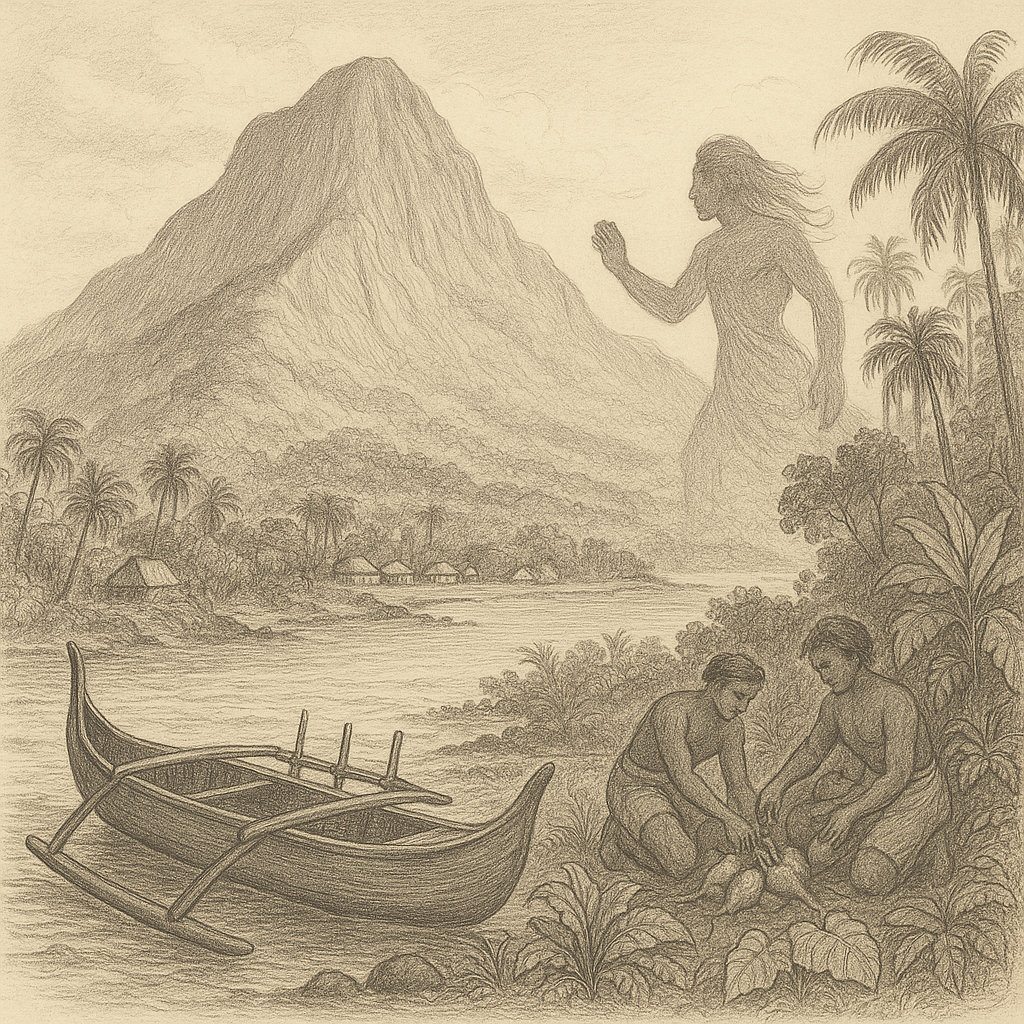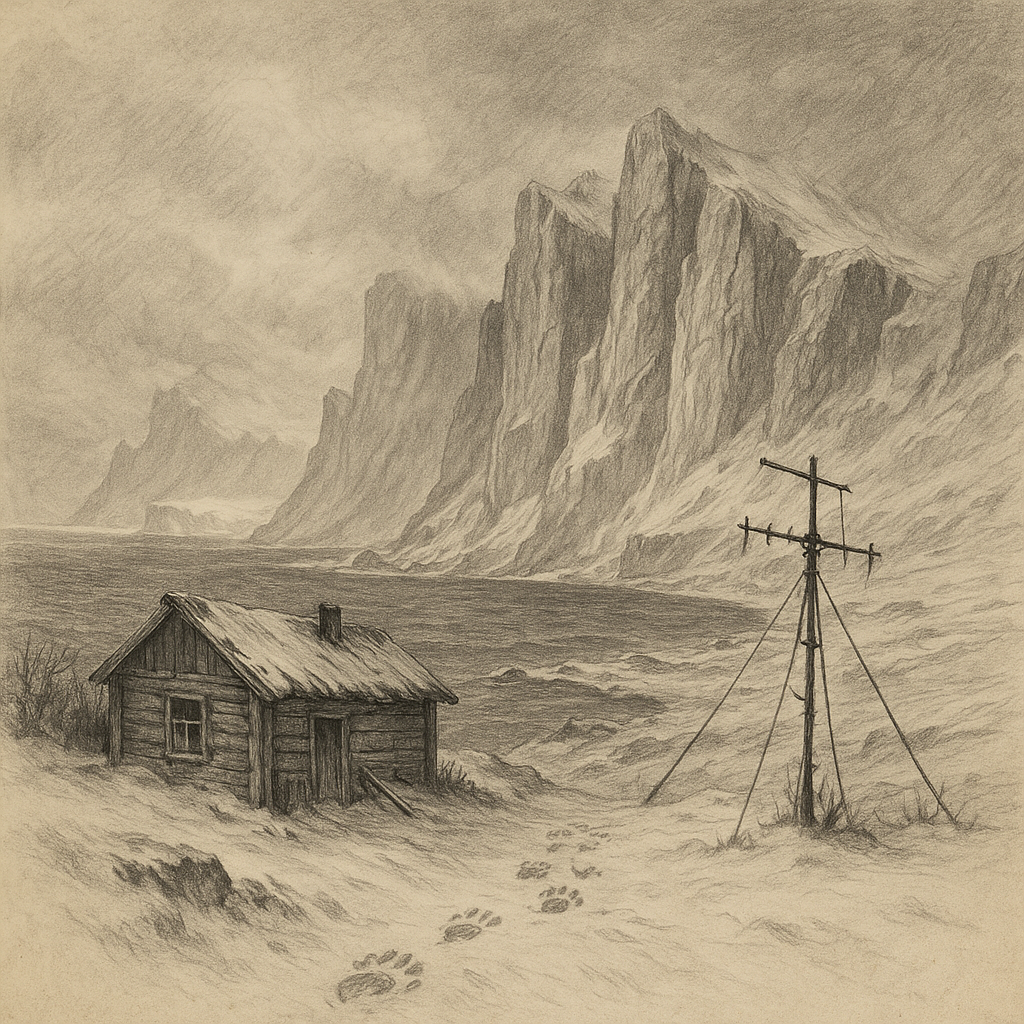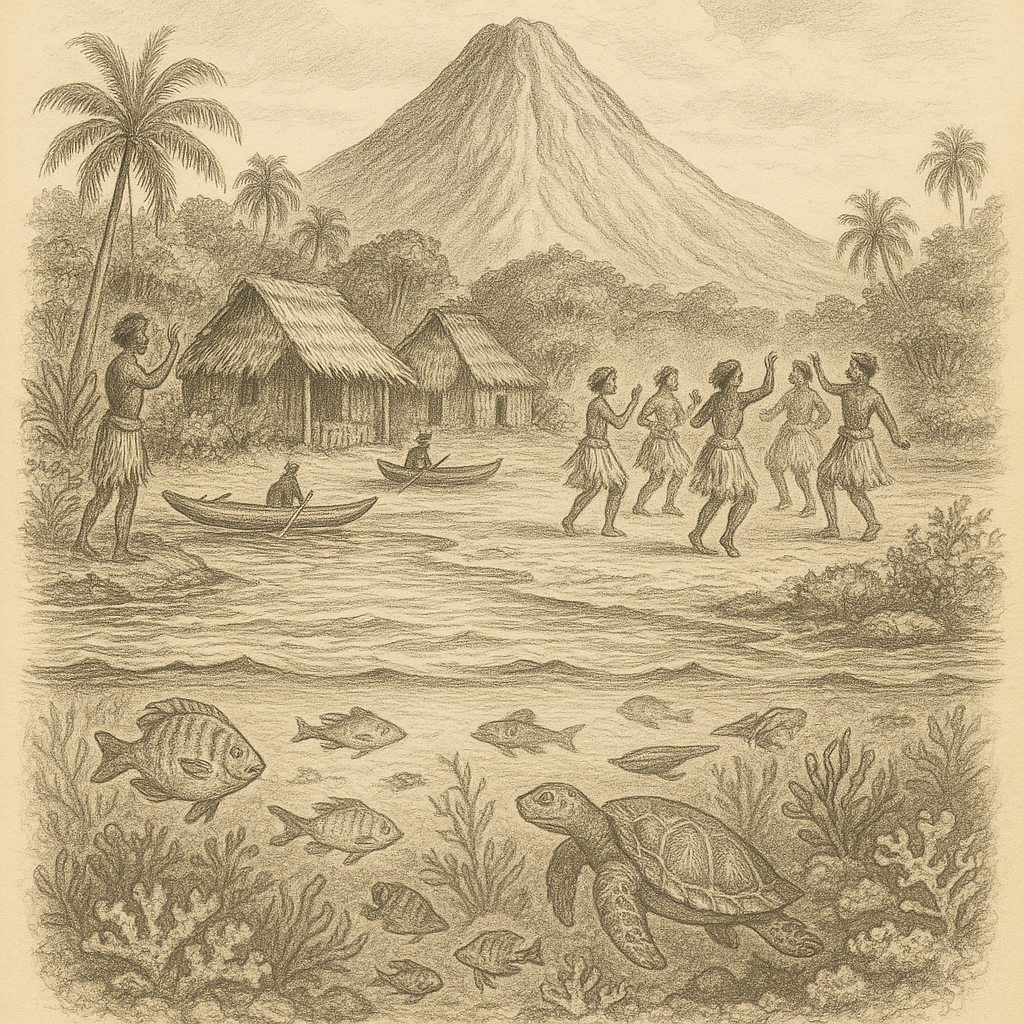Taʻū Island: A Remote Jewel of American Samoa Taʻū Island is the easternmost island of the Manuʻa Islands, part of American Samoa in the South Pacific Ocean. Remote and steeped in natural beauty and cultural history, Taʻū is an island that offers a unique glimpse into the ecological and mythological richness of Polynesia. While it may be lesser-known than other Pacific islands, its isolation has preserved both its biodiversity and cultural traditions in remarkable ways. Geographical Location and Geological Background Taʻū Island lies approximately 100 kilometers east of Tutuila, the main island of American Samoa. It is part of the volcanic Samoan archipelago, formed by underwater volcanic activity associated with the Pacific Tectonic Plate. Taʻū is the largest of the Manuʻa Islands and is essentially the exposed summit of a massive shield volcano that rises over 930 meters from sea level at its highest point, Mount Lata, which is also the tallest peak in American Samoa. The island, roughly circular in shape, covers an area of about 44 square kilometers. Its volcanic origins are evident in its rugged topography, steep cliffs, and black sand beaches. Volcanic activity on Taʻū has been dormant since the 19th century, with the last recorded eruption occurring in 1866. Taʻū’s position near the eastern edge of the Samoan hotspot trail gives scientists invaluable insights into Pacific plate tectonics, making it an important site for geological research. Flora and Fauna Taʻū Island is covered in lush rainforest that thrives in the island’s humid, tropical climate. The high levels of rainfall—averaging more than 4,000 mm annually—support dense vegetation, from coastal mangroves to montane cloud forests in higher elevations around Mount Lata. The island is part of the National Park of American Samoa, which was established to protect its unique ecosystems. The park encompasses both terrestrial and marine environments, preserving coral reefs, coastal forests, and native fauna. Various bird species, including the rare tooth-billed pigeon and the brightly colored Samoan starling, inhabit the forests. The surrounding waters teem with marine life such as parrotfish, sea turtles, and reef sharks. The relatively untouched ecosystems make Taʻū an important area for conservation biology and ecological research. Human Settlement and Culture Taʻū Island is sparsely populated, with a few villages including Taʻū, Fitiʻuta, and Faleāsao located along the coast. The islanders maintain a traditional Samoan lifestyle rooted in communal values, agriculture, and fishing. Taro, breadfruit, and bananas are staple crops, often cultivated in family plots. The fa’a Samoa, or “the Samoan way,” strongly influences daily life. This includes respect for elders, communal decision-making, and the importance of extended family. Each village has a matai (chief) system, and social roles are clearly defined by tradition. There are no large resorts or modern tourist facilities on Taʻū. Visitors typically stay in family-run guesthouses or with local families. This absence of major tourism infrastructure has helped the island retain its authenticity and cultural integrity. Legendary and Cultural Significance Taʻū Island plays a central role in Polynesian mythology and Samoan cosmology. According to legend, it is the sacred homeland of Tagaloa, the supreme creator god in Samoan mythology. The island is said to be the place where Tagaloa created the first humans, bringing them to life from the earth and clay. Sacred sites dot the landscape, many of which are still visited by islanders for ritual purposes. One of the most prominent is Saua, a site near the village of Fiti’uta, believed to be the location where the first kava ceremony between chiefs was held—a tradition that endures in Samoan society today. Another significant legend involves the warrior woman Nafanua, who is said to have visited the island and united warring tribes before departing for Savaiʻi in present-day Samoa. Her stories are passed down through oral tradition and remain an important part of cultural identity. Remarkable and Unique Features One of the most remarkable recent developments on Taʻū Island is its transformation into a solar-powered community. In 2016, the island transitioned from relying on imported diesel fuel to operating almost entirely on solar energy. A microgrid comprising over 5,000 solar panels and 60 Tesla Powerpack battery systems now powers the island, providing a sustainable and environmentally responsible energy source. This initiative not only preserves the natural environment by reducing fossil fuel dependence but also serves as a model for renewable energy in remote communities worldwide. Another distinctive aspect of Taʻū is its remoteness. Accessible only by small boat or plane from Tutuila, Taʻū feels worlds away from the modern bustle. This isolation has helped preserve its natural environments from overdevelopment and its culture from the homogenizing effects of globalization. Visitation and Conservation Due to its remote location and protected status, Taʻū Island is not a typical tourist destination. However, intrepid ecotourists, scientists, and cultural scholars are drawn to its shores. Visitation is governed by local customs and park regulations to ensure minimal disruption to the island’s delicate ecosystems and traditional lifestyle. The U.S. National Park Service, in conjunction with local authorities, has worked to engage residents in environmental stewardship, helping to ensure the long-term preservation of Taʻū’s natural and cultural heritage. Conclusion Taʻū Island is a compelling blend of geological wonders, rich biodiversity, ancient Polynesian mythology, and sustainable development. Its volcanic peaks, sacred sites, and solar-powered future make it an inspiring example of how tradition and innovation can coexist. While it remains one of the most secluded jewels of the Pacific, Taʻū Island offers a rare and authentic experience of nature, culture, and history—one that beckons those willing to venture far off the beaten path.

Ta’u Island
Do you like my work? Buy Me A Coffee
Do you like my work? Buy Me A Coffee
-

Ta’u Island
Taʻū Island: A Remote Jewel of American Samoa Taʻū Island is the easternmost island of the Manuʻa Islands, part of American Samoa in the South Pacific Ocean. Remote and steeped in natural beauty and cultural history, Taʻū is an island that offers a unique glimpse into the ecological and mythological richness of Polynesia. While it…
-

Hall Island
Hall Island: A Remote Arctic Treasure Hall Island is one of the most remote and least-known islands within the Russian Arctic. Tucked away in the far reaches of the East Siberian Sea, this isolated piece of land lies north of the Chukotka Peninsula and forms part of the desolate yet enigmatic Franz Josef Land archipelago.…
-

Tikopiaa Southeastern Island
Tikopia: The Southeastern Gem of the Solomon Islands Nestled deep within the vast expanse of the South Pacific Ocean lies Tikopia, a remote volcanic island that forms part of the southeastern cluster of the Solomon Islands. With its lush green rainforests, rugged volcanic peaks, and strong cultural traditions, Tikopia stands as a unique embodiment of…
by
Tags: